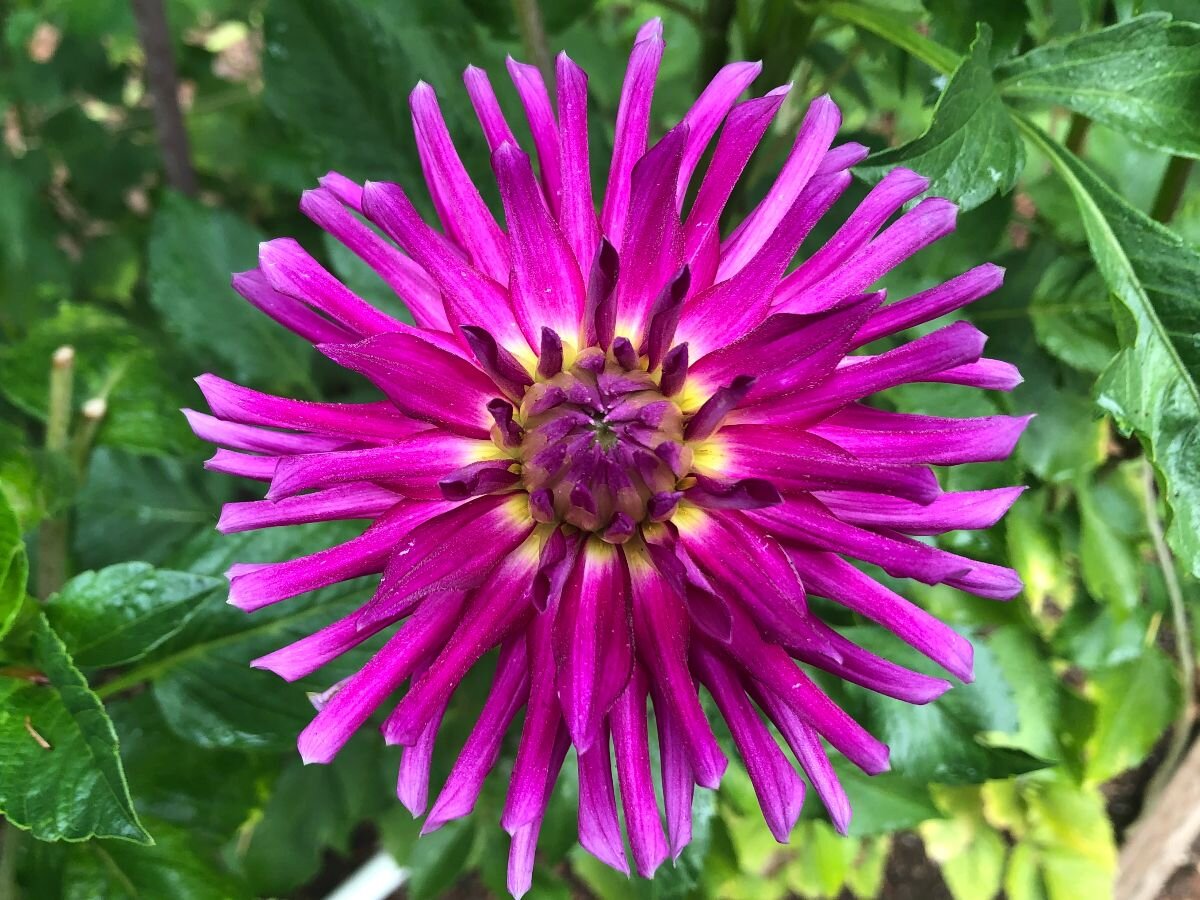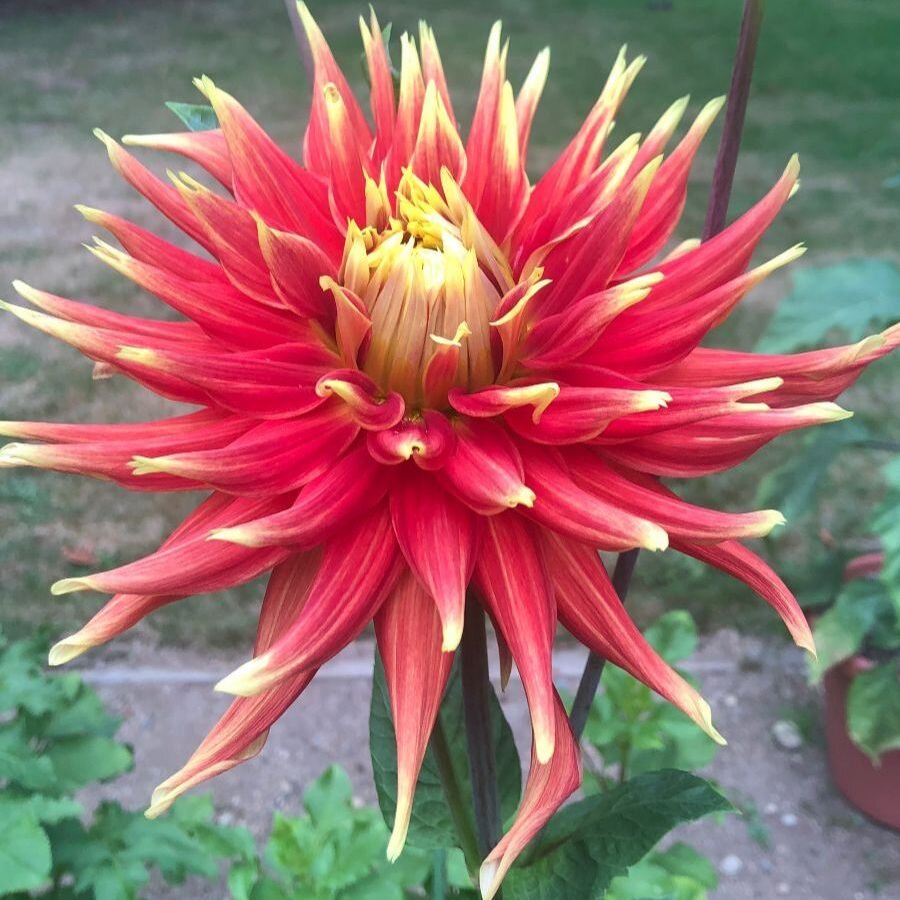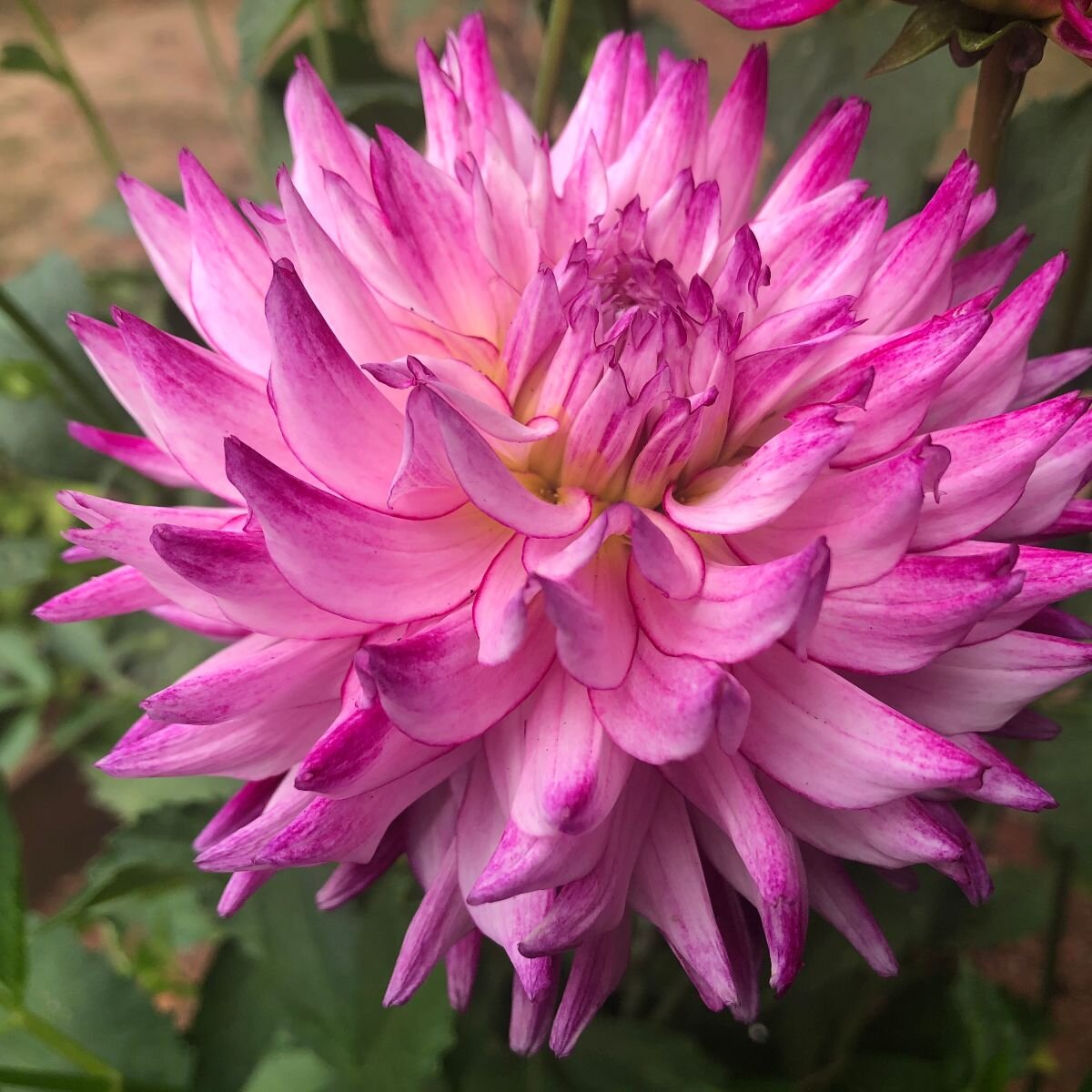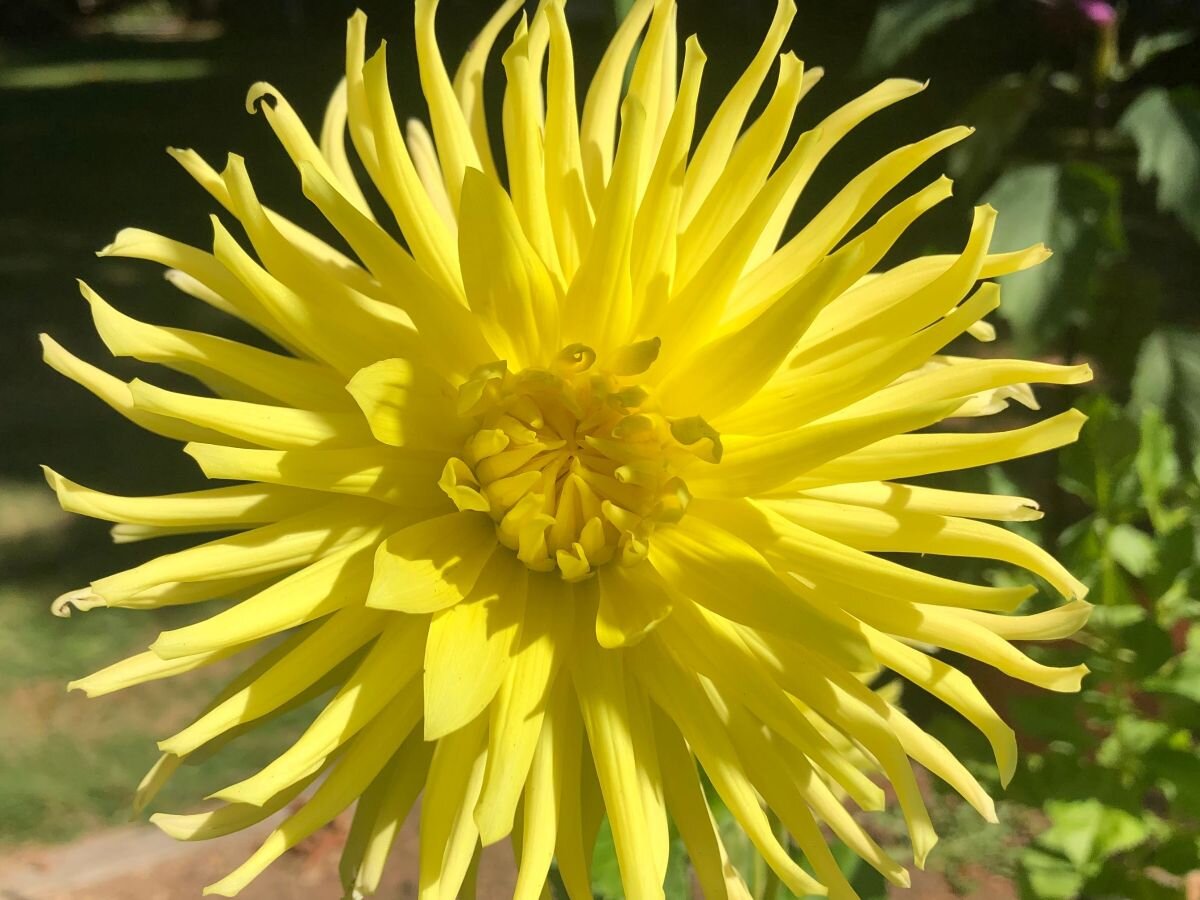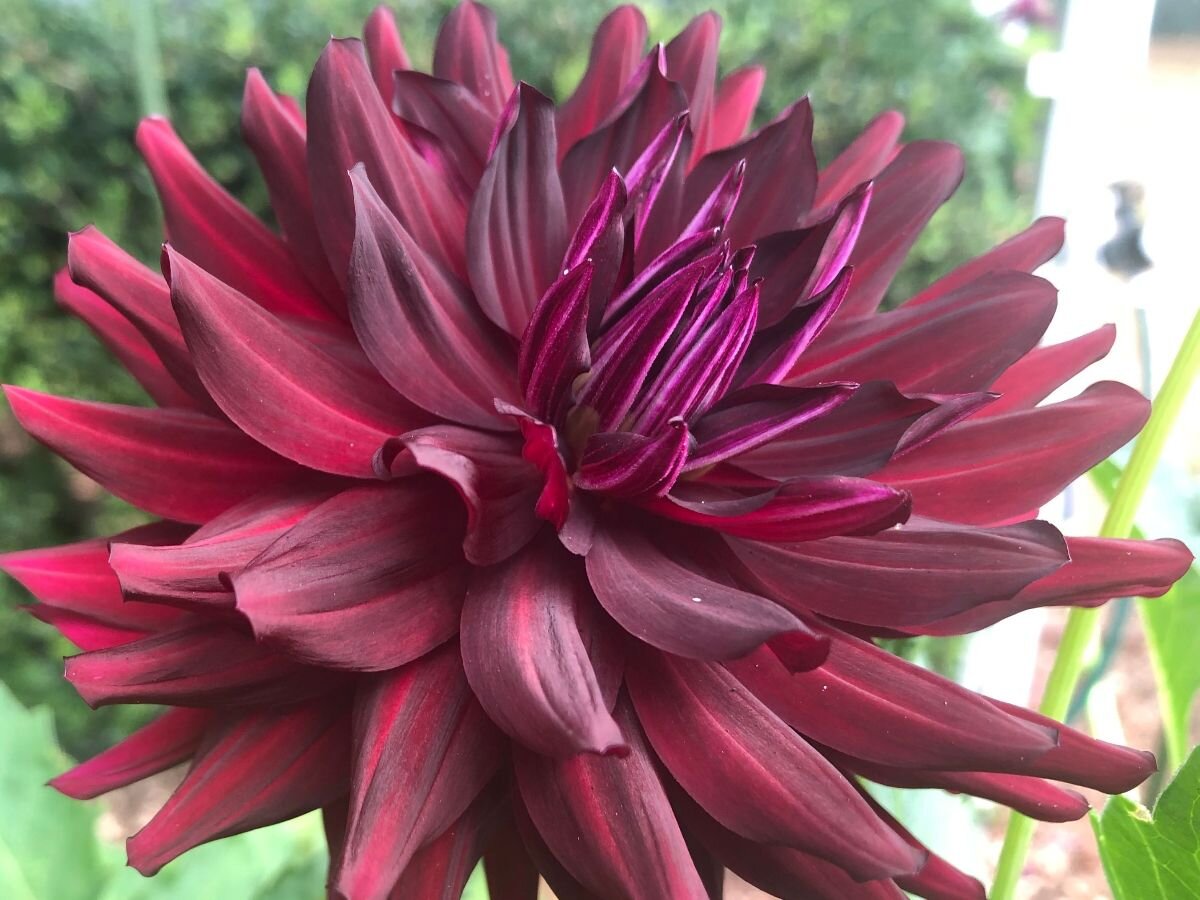Dahlias
Photo credit: Janelle Deutsch. From top left to right: Tutti Fruitti, Show ‘N’ Tell, Enchantress, My Little Sunshine, Hollyhill Black Beauty.
By Janelle Deutsch
In the mid-1980’s there was a small dahlia farm off the Issaquah-Fall City Road. Apartments and commercial buildings stand there now. It was at this dahlia farm that I bought my first dahlia tubers. New to gardening, I ordered some garden soil, mixed it with aged horse manure, and planted the tubers. The results were so gratifying that I have been growing dahlias ever since.
The dahlia is a genus of tuberous plants that are members of the Asteraceae family. They are related to species that include the sunflower, daisy, chrysanthemum and zinnia. There are so many varieties of beautiful dahlias to enjoy: cactus, anemone, waterlily and dinner plate, just to name a few. The colors run the spectrum of pure white to almost black, with every other color combination in between (except blue). Blooms can vary from two inches (petite lollipop pompoms) to 15 inches (dinner plate). In addition, dahlias can come in heights, anywhere from two feet to over five feet. I often get asked the question to “dig or not to dig” up my tubers in November. The dahlia tubers cannot survive extreme cold temperatures. I personally leave my dahlia tubers in the ground over the winter since the northwest weather is relatively mild compared to other regions of the country. However, I do cut down my dahlia stems below the ground and cover the tubers with several layers of mulch. In this way, the plants are provided with warmth and protection from too much water. Excessive moisture can cause tuber rot. These versatile plants are deer and rabbit resistant (which is a plus in our area), relatively easy to grow, and are excellent cut flowers for arrangements.
Summer is over. Fall is just beginning. The dahlias are still lighting up the yard with vibrant colors and eye-catching shapes for a few more weeks. The kitchen vase is empty, and the dahlia garden is calling…

